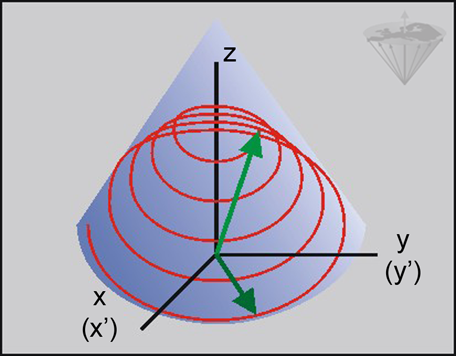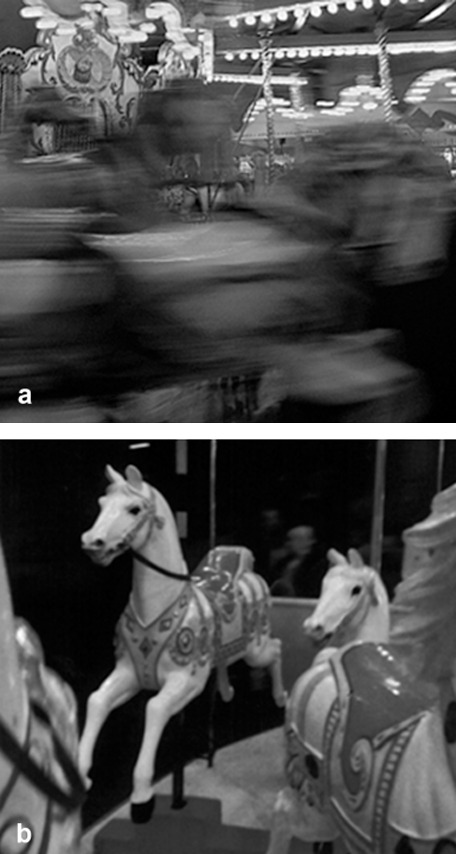





 efore we try to explain the effect of a radiofrequency pulse on a spin system, we have to change our way of looking at this system. It is very difficult to understand the movements within this system because the spin rotates around its own axis and precesses around the axis of the magnetic field B0 at the Larmor frequency.
efore we try to explain the effect of a radiofrequency pulse on a spin system, we have to change our way of looking at this system. It is very difficult to understand the movements within this system because the spin rotates around its own axis and precesses around the axis of the magnetic field B0 at the Larmor frequency.
The RF pulse adds another movement. To follow these movements requires a lot of imagination (Figure 02-10).

Figure 02-10:
The spiral motion of the tip of the magnetization during RF excitation shown in a stationary frame. The rotating frame depicts only the blue axes and the green arrows. To distinguish when we are using the rotating frame of reference, we denote the x- and y-axes as x' and y'. The same procedure can be used for z, but z and z' are identical.
However, if we try to look at the system from the perspective of a coordinate system rotating at a frequency equal or close to the Larmor frequency, the situation becomes less complicated.
This may not seem obvious, but in fact we are doing this all the time. When a person walks by us, it is very easy for us to assess how much faster than us he is walking. Yet, if we view the same action from outer space and have to take into account the rotation of the earth the problem would be much more complicated.
We are, in fact, using a rotating frame of reference since we are rotating at the same rate. In NMR we can achieve this by using a frame of reference which is rotating at the resonance (Larmor) frequency. On-resonance spins will be stationary in this frame whereas off-resonance spins will rotate at a frequency which is the difference between their frequency and the resonance frequency (Figure 02-11).

Figure 02-11:
Another example of a rotating (coordinate) system: Watching the horses on a merry-go-round from (a) far away and (b), after climbing aboard, from the merry-go-round itself. From outside, the horses look blurred and, if they are moving fast, it is not easy to distinguish them. If one’s point of reference is on the merry-go-round, it is much easier to distinguish the horses and their features.